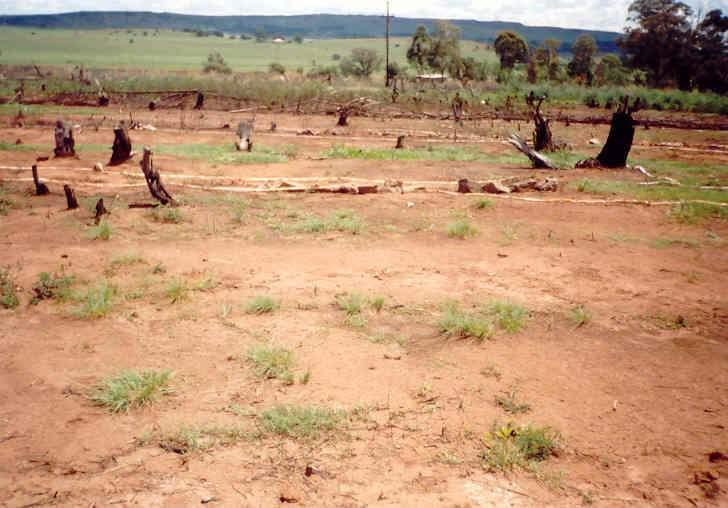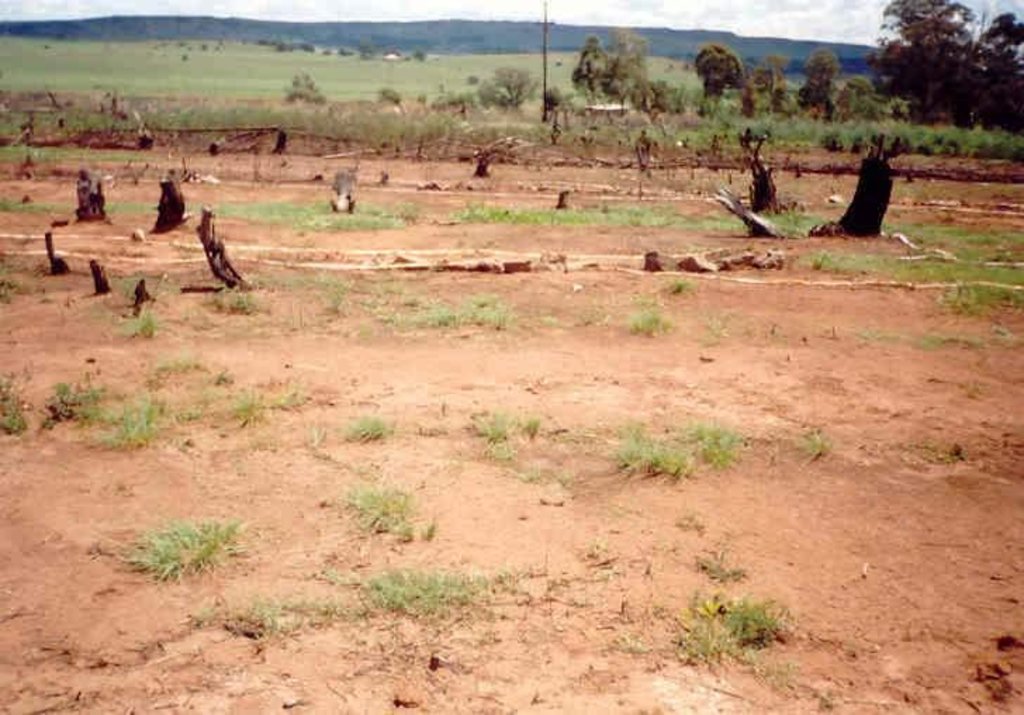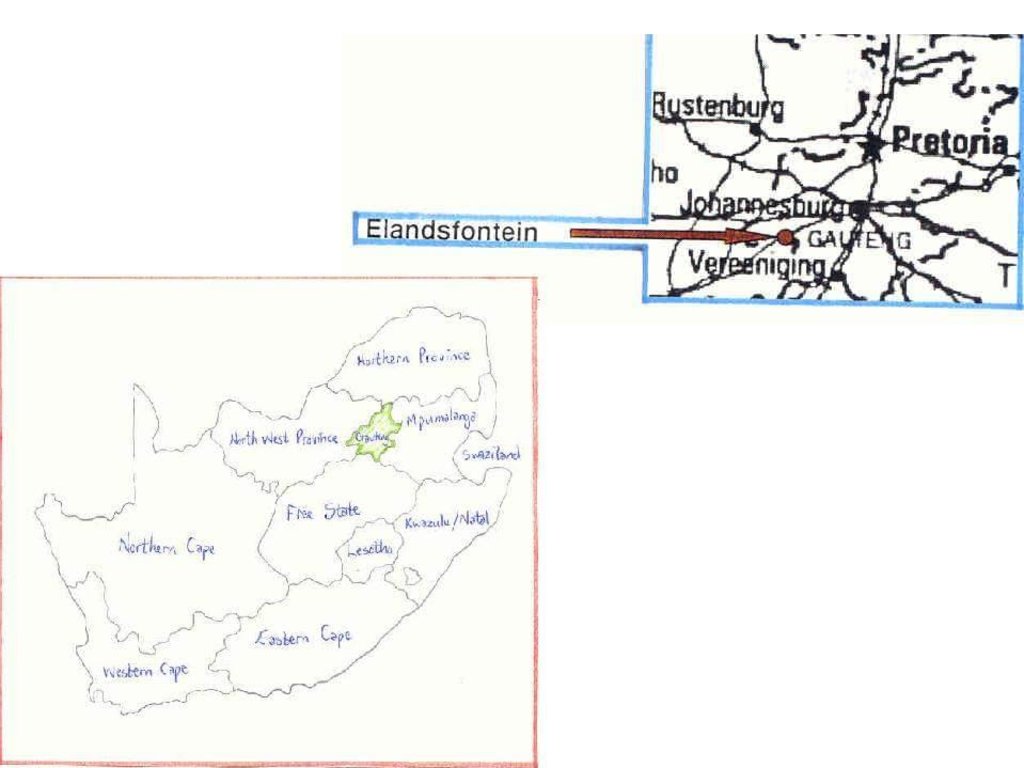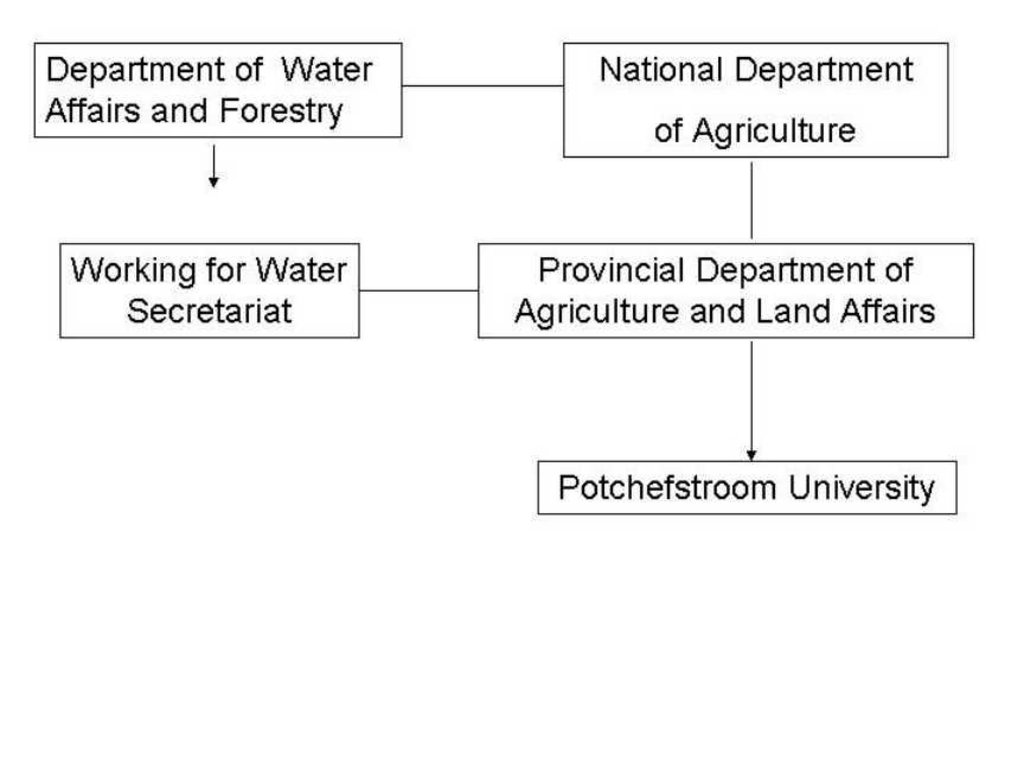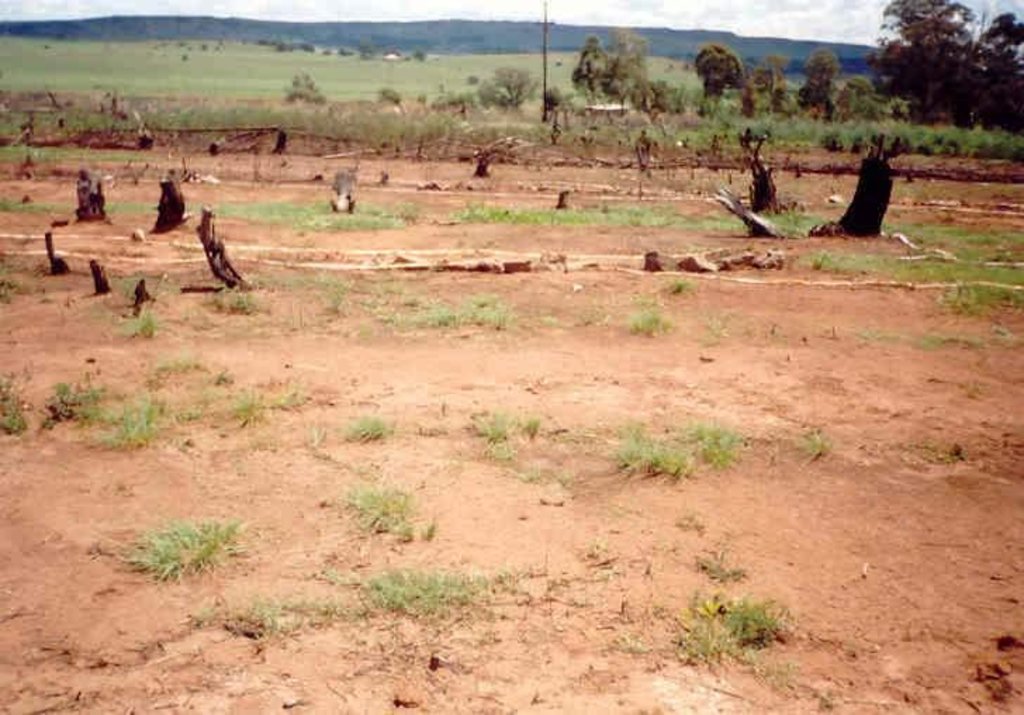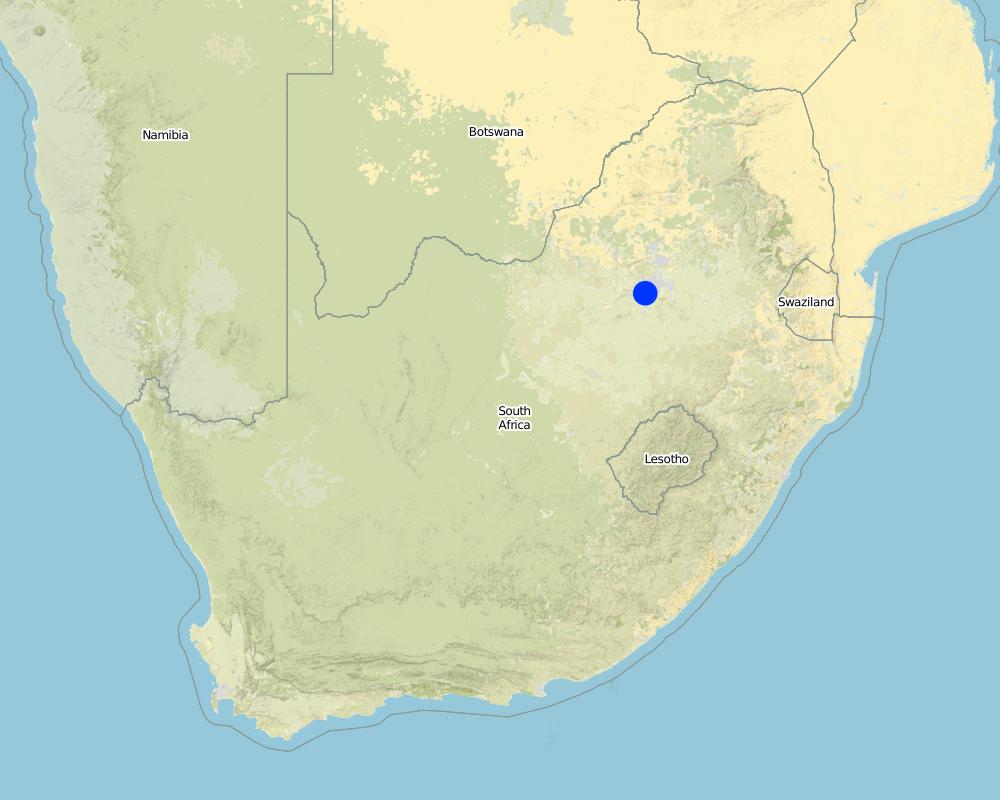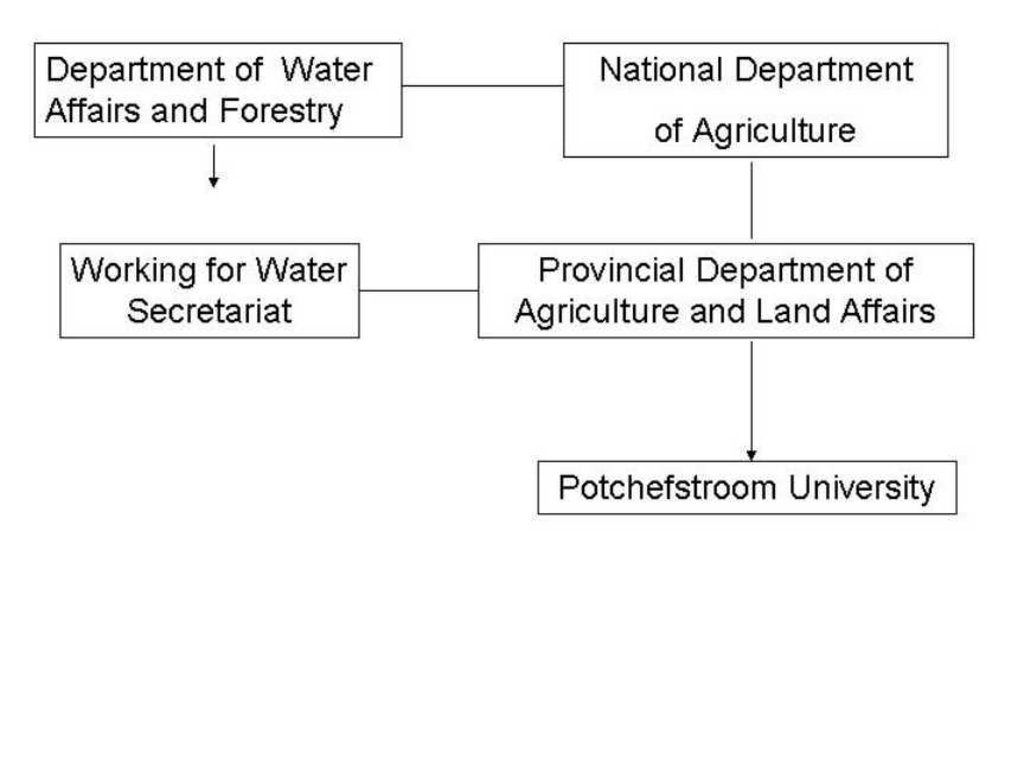Working for Water [南非]
- 创建:
- 更新:
- 编制者: Klaus Kellner
- 编辑者: –
- 审查者: Fabian Ottiger
approaches_2338 - 南非
查看章节
全部展开 全部收起1. 一般信息
1.2 参与方法评估和文件编制的资源人员和机构的联系方式
关键资源人员
SLM专业人员:
Barac Anuschka
Georg-August-Universität Göttingen
Wilhelmsplatz 1, 37073 Göttingen
德国
SLM专业人员:
SLM专业人员:
de Wet Sarone
Potchefstroom University for Christian Higher Education
南非
SLM专业人员:
Fulls Erich
Department of Agriculture (Gauteng)
南非
SLM专业人员:
Lepin Edward
南非
有助于对方法进行记录/评估的机构名称(如相关)
Georg August Universität Göttingen (Georg August Universität Göttingen) - 德国有助于对方法进行记录/评估的机构名称(如相关)
Gauteng Department of Agriculture and Rural Develo (Gauteng Department of Agriculture and Rural Develo) - 南非有助于对方法进行记录/评估的机构名称(如相关)
Potchefstroom Universiteit vir CHO (Potchefstroom Universiteit vir CHO) - 南非1.3 关于使用通过WOCAT记录的数据的条件
编制者和关键资源人员接受有关使用通过WOCAT记录数据的条件。:
是
1.4 SLM技术问卷的参考
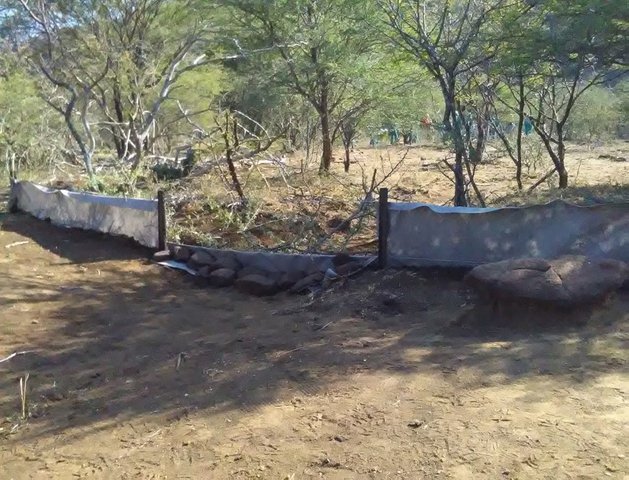
Silt fences to trap sediment in areas affected … [南非]
Silt fences together with brush packing were introduced to reduce sediment transport and restoration of gully erosion in the Potlake nature reserve, Limpopo Province, South Africa.
- 编制者: Dirk Pretorius
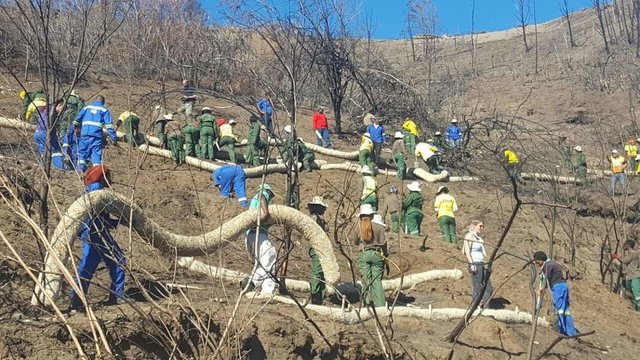
Use of sediment retention fibre rolls (SRFR) and … [南非]
Sediment retention fibre rolls (SRFR) and erosion blankets were deployed to stabilise steep slopes after vegetation cover was destroyed by fire, near the town of Knysna in the Western Cape Province, South Africa
- 编制者: Dirk Pretorius
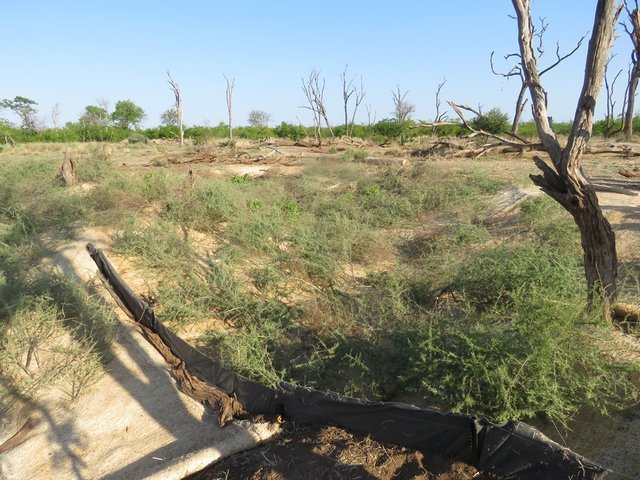
Reshaping of gully erosion through integration of silt … [南非]
The rehabilitation of active gully erosion by re-sloping the banks of the gully in an effort to manage the energy of the water entering the system. Bare soil is protected from erosion by covering it with erosion blankets, brush packing and the establishment of silt fences.
- 编制者: Dirk Pretorius
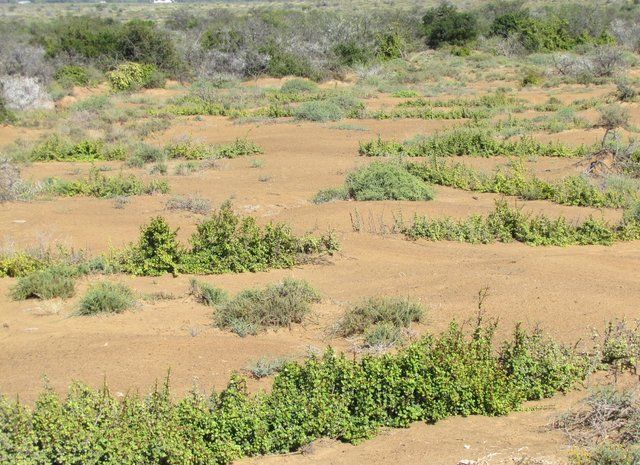
Spekboom (Portulacaria afra) planting within riplines for thicket … [南非]
The restoration of the thicket biome in the Eastern Cape is assisted by planting ‘spekboom’ (elephant bush) (Portulacaria afra), an indigenous succulent plant within contour lines/riplines on degraded hillslopes. The increased vegetation cover reduces runoff and soil loss.
- 编制者: Dirk Pretorius
2. SLM方法的描述
2.1 该方法的简要说明
Government funded restoration/rehabilitation initiative as part of Working for Water project. Aim was to eradicate alien invasive.
2.2 该方法的详细说明
该方法的详细说明:
Aims / objectives: The aim was to eradicate alien invasive species and then to revegetate the area in order to recover the natural grazing for livestock. Community participation plays a very important role, making them aware of the importance of restoring degraded rangelands. The approach for applying SWC technologies included making use of community members (at a daily wage) to carry out the labour intensive technologies and thus also playing a part in increasing community awareness.
2.3 该方法的照片
2.5 采用该方法的国家/地区/地点
国家:
南非
区域/州/省:
Gauteng
Map
×2.6 该方法的开始和终止日期
注明开始年份:
1996
终止年份(若不再采用该方法):
2000
2.7 方法的类型
- 基于项目/方案
2.8 该方法的主要目的/目标
The Approach focused mainly on SLM with other activities (Job creation and capacity building of SWC technicians. Improvement of grazing and vegetation cover, in order to conserve soil and water.)
On-site or on-farm technology application, thus making community aware of positive effect of restoration technology. To see to it that job creation occurs in surrounding communities.
The SLM Approach addressed the following problems: The evaluation of a restoration trail after the control of alien woody invasive vegetation in the Gauteng Province and to restore degraded rangeland to nearest original state before degradation took place (= improve grazing).
2.9 推动或妨碍实施本办法所适用的技术的条件
财务资源和服务的可用性/可得性
- 阻碍
No funds available for restoration.
Treatment through the SLM Approach: Apply more cost effective approaches or apply for funds.
法律框架(土地使用权、土地和水使用权)
- 启动
The existing land ownership, land use rights / water rights helped a little the approach implementation: Land users did not liked what happened, do not think the approach will work. Some appreciation for what is being done.
了解SLM,获得技术支持
- 阻碍
Equipment used is too labour intensive and take a lot of time.
Treatment through the SLM Approach: If enough funds were available, mechanical equipment could be used (faster and more effective).
其他
- 阻碍
Involvement of community.
Treatment through the SLM Approach: Negotiation and awareness programmes.
3. 相关利益相关者的参与和角色
3.1 该方法涉及的利益相关者及其职责
- 当地土地使用者/当地社区
Working land users were work equally divided between men and women (Volunteers from communities for
- 国家政府(规划者、决策者)
DAF and Provincial Department of Agriculture (initiative an
- 国际组织
Funding
3.2 当地土地使用者/当地社区参与该方法的不同阶段
| 当地土地使用者/当地社区的参与 | 指定参与人员并描述活动 | |
|---|---|---|
| 启动/动机 | 被动 | public meetings |
| 计划 | 被动 | |
| 实施 | 外部支持 | Mainly: responsibility for major steps; partly: casual labour |
| 监测/评估 | 被动 | |
| Research | 被动 | on-farm |
3.3 流程图(如可用)
3.4 有关SLM技术选择的决策
具体说明谁有权决定选择要实施的技术:
- 仅限SLM专家
解释:
directive (top-down). Identify by DARF.
Decisions on the method of implementing the SLM Technology were made by by SLM specialists alone (top-down). directive (top-down).
4. 技术支持、能力建设和知识管理
4.1 能力建设/培训
是否为土地使用者/其他利益相关者提供培训?:
是
明确受训人员:
- 土地使用者
- SWC specialists, extensionists/trainers
培训形式:
- 在职
- 示范区域
涵盖的主题:
Ecological principles, restoration technologies.
4.2 咨询服务
土地使用者有权使用咨询服务吗?:
是
指明是否提供了咨询服务:
- 在土地使用者的土地上
- 在固定中心
说明/注释:
Name of method used for advisory service: Demonstration; Key elements: Rural community appraisal, participatory rural approach; 1) Advisory service was carried out through: government's existing extension system. Extension staff: specifically hired project employees 3) Target groups for extension: technicians/SWC specialists; Activities: People in charge of field work etc.
Advisory service is inadequate to ensure the continuation of land conservation activities; Except for being inadequate, there are not enough funds available to continue the activities. Expert advise from specialists after evaluation is also needed to be adequate.
4.3 机构强化(组织发展)
是否通过这种方法建立或加强了机构?:
- 是,少许
具体说明机构的强化或建立程度:
- 本地
具体说明支持类型:
- 能力建设/培训
4.4 监测和评估
监测和评估是该方法的一部分吗?:
是
注释:
bio-physical aspects were regular monitored through measurements
economic / production aspects were ad hoc monitored through observations
area treated aspects were regular monitored through measurements
no. of land users involved aspects were ad hoc monitored through observations
management of Approach aspects were ad hoc monitored through observations
There were no changes in the Approach as a result of monitoring and evaluation: One site establishment for restoration purposes, thus no changes where made because no future project is planned in area in near future.
4.5 研究
研究是该方法的一部分吗?
是
明确话题:
- 生态学
- 技术
提供进一步的细节,并指出是谁做的研究:
Soil related research and analyses and also restoration technology application information.
Research was carried out on-farm
5. 融资和外部物质支持
5.1 该方法中SLM组成部分的年度预算
如果不知道准确的年度预算,请给出一个范围:
- < 2,000
注释(例如主要的资助来源/主要捐助者):
Approach costs were met by the following donors: international (Donors): 10.0%; government (national - Water Affairs (DAF)): 80.0%; national non-government (University): 10.0%
5.2 为土地使用者提供财政/物质支援
土地使用者是否获得实施该技术的财政/物质支持?:
是
5.3 对特定投入的补贴(包括劳动力)
- 设备
| 具体说明哪些投入得到了补贴 | 程度如何 | 对补贴做出具体说明 |
|---|---|---|
| 机械 | 充分融资 | |
| 工具 | 充分融资 | |
- 农业
| 具体说明哪些投入得到了补贴 | 程度如何 | 对补贴做出具体说明 |
|---|---|---|
| 种子 | 充分融资 | |
| 化肥 | 充分融资 | |
| Biocides | 充分融资 | |
如果土地使用者的劳动力是一项重要的投入,那么是不是:
- 以现金支付
注释:
Job creation and community involvement.
5.4 信用
是否根据SLM活动的方法给予信用值?:
否
6. 影响分析和结论性陈述
6.1 方法的影响
该方法是否帮助土地使用者实施和维护SLM技术?:
- 否
- 是,很少
- 是,中等
- 是,支持力度很大
To layout contours to prevent erosion and serve as catchment for water. Establishment of grass also served as stabiliser to prevent erosion and also serves as fodder in addition.
Did other land users / projects adopt the Approach?
- 否
- 是,很少
- 是,中等
- 是,支持力度很大
Unsure.
6.3 方法活动的可持续性
土地使用者能否维持通过该方法实施的措施(无外部支持的情况下)?:
- 是
若是,请说明如何维持:
Most land users benefited from the approach and they are either in direct vicinity or were part of the job creation. They know the benefit of the results from restoration obtained and this might have inspired them to carry on. If some funds were to be available (from the land users themselves) they might be able to continue the approach by themselves and they know they will benefit from it.
6.4 该方法的长处/优点
| 土地使用者眼中的长处/优势/机会 |
|---|
| Job creation. (How to sustain/ enhance this strength: Appoint members could involve rest of community to help look after restored area (improved grazing).) |
| Training. (How to sustain/ enhance this strength: Community members learnt a lot about conservation and they can now carry on with it on their own (they have the knowledge).) |
| 编制者或其他关键资源人员认为的长处/优势/机会 |
|---|
| Job creation. (How to sustain/ enhance this strength: Appoint a community member to look after the area and see that if is managed.) |
| Awareness and training. (How to sustain/ enhance this strength: Personal improvement to understand how to take care of land and how to improve it.) |
| Inter-cultural co-operation. |
6.5 该方法的弱点/缺点以及克服它们的方法
| 编制者或其他关键资源人员认为的弱点/缺点/风险 | 如何克服它们? |
|---|---|
| Not enough communication between specialists and community members on important factors. | Better communication from start of approach or project. |
| Linguistic abilities not sufficient (especially on side of specialists). | To obtain some simple linguistic abilities, such as how to greet and ask approach related questions. |
| SWC technology application must not be built on job creation incentives (only), but must be sustainable in the long term without incentives (job creations) by the land users. |
7. 参考和链接
7.1 方法/信息来源
- 实地考察、实地调查
- 与土地使用者的访谈
链接和模块
全部展开 全部收起链接

Silt fences to trap sediment in areas affected … [南非]
Silt fences together with brush packing were introduced to reduce sediment transport and restoration of gully erosion in the Potlake nature reserve, Limpopo Province, South Africa.
- 编制者: Dirk Pretorius

Use of sediment retention fibre rolls (SRFR) and … [南非]
Sediment retention fibre rolls (SRFR) and erosion blankets were deployed to stabilise steep slopes after vegetation cover was destroyed by fire, near the town of Knysna in the Western Cape Province, South Africa
- 编制者: Dirk Pretorius

Reshaping of gully erosion through integration of silt … [南非]
The rehabilitation of active gully erosion by re-sloping the banks of the gully in an effort to manage the energy of the water entering the system. Bare soil is protected from erosion by covering it with erosion blankets, brush packing and the establishment of silt fences.
- 编制者: Dirk Pretorius

Spekboom (Portulacaria afra) planting within riplines for thicket … [南非]
The restoration of the thicket biome in the Eastern Cape is assisted by planting ‘spekboom’ (elephant bush) (Portulacaria afra), an indigenous succulent plant within contour lines/riplines on degraded hillslopes. The increased vegetation cover reduces runoff and soil loss.
- 编制者: Dirk Pretorius
模块
无模块


